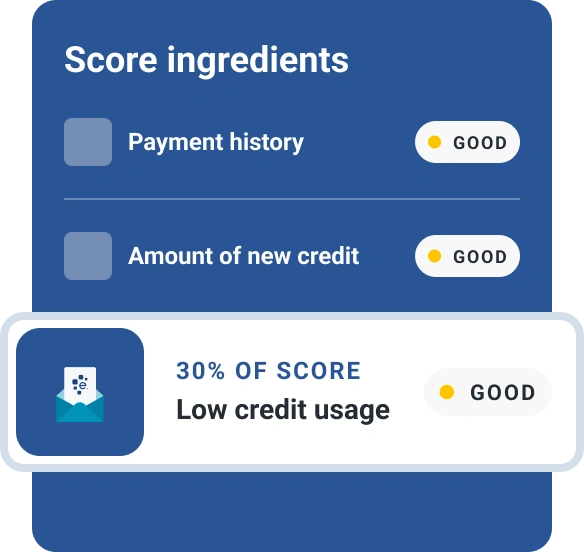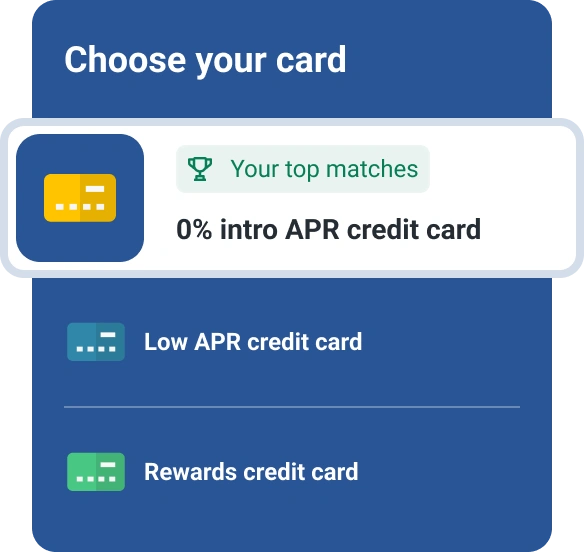How Do 0% Intro APR Credit Cards Work?
Quick Answer
Credit cards with an introductory 0% annual percentage rate (APR) let you make purchases, balance transfers or both without paying interest for a certain period of time.

Credit cards with a 0% introductory annual percentage rate (APR) allow you to make purchases, balance transfers or both without paying interest for a certain period of time. A 0% intro APR credit card can be a useful way to pay down high-interest credit card debt or finance a major purchase, but it's important to understand how the cards work before applying for one.
1. The Intro Period Only Applies to Some Transactions
The 0% introductory APR usually applies to balance transfers, purchases or both, but not to cash advances. Carefully read the credit card terms so you understand what type of transaction qualifies for the promotional 0% APR. If the card offers a 0% intro APR on purchases, purchases made with the card won't accrue interest until the promotional period ends.
Balance transfer cards let you move a balance from another credit card to your new 0% intro APR card. There's usually a balance transfer fee of 3% to 5%. Once your balance is transferred, it won't accrue any interest until the promotional period ends.
2. The 0% Intro APR Only Lasts a Certain Time
After you open the account, the 0% intro APR lasts a certain number of months or billing cycles. By law, a promotional APR must last at least six months, but can be longer. Common promotional periods are 12, 15, 18 and 21 months.
The length of a card's promotional 0% APR can also differ depending on transaction type. For instance, a card might have a longer 0% intro APR period for balance transfers and a shorter one for purchases.
Learn more: What Happens When Your 0% Introductory APR Ends?
3. There's a Deadline for Completing a Balance Transfer
You generally need to request or complete a balance transfer within a certain time frame—for instance, within 60 days of opening the account—to get the 0% intro APR. Keep in mind that requesting and completing a transfer are not the same thing; completing a transfer can take up to 21 days. Check the language of your cardholder agreement to make sure you don't miss the balance transfer deadline.
Tip: Keep making payments on your old credit card while the balance transfer is being processed so you don't miss a payment, which could hurt your credit score.
4. There May Be a Balance Transfer Fee
Credit cards may charge a balance transfer fee, which usually ranges from 3% to 5% of the amount being transferred. Compare the potential savings in interest to the balance transfer fee to decide if a balance transfer makes financial sense. A card with a 3% balance transfer fee helps keep more money in your pocket compared to one with a 5% fee.
Example: You want to make a $5,000 balance transfer from one credit card with a 22% APR to another with a 3% balance transfer fee and a 0% intro APR for 12 months. You are confident you can pay that entire balance in 12 months. If you pay the $150 balance transfer fee, your total cost to pay off your credit card in a year is $5,150 (your original $5,000 balance plus the balance transfer fee). That's a significant savings over the interest you'd accrue on the original card over the same period of time.
Learn more: Balance Transfer Credit Card Mistakes to Avoid
5. You Can't Always Transfer Your Full Balance
The most you'll be able to transfer to your new card is your credit limit amount minus any balance transfer fees. If your credit limit is $3,000 and the card has a 3% balance transfer fee ($90), for instance, the most you'll be able to transfer is $2,910.
However, you won't know your credit limit until your card is approved, so it's hard to predict how much you'll be allowed to transfer. In addition, some card issuers set lower limits on balance transfers. These limits could be based on your credit profile or on the card issuer's general policies.
6. You Generally Need Good to Excellent Credit
You'll need good to excellent credit to qualify for most 0% intro APR credit cards. A FICO® ScoreΘ of 670 to 739 is considered good; a FICO® Score of 740 to 799 is considered very good; and a FICO® Score of 800 to 850 is considered exceptional. A higher credit score may mean getting approved for a higher credit limit, which could allow you to transfer larger balances to your new credit card.
Tip: Your credit score isn't the only factor that determines whether you're given a high or low credit limit. Credit card issuers also consider your income and overall debt when evaluating your application.
7. Remaining Balances Will Incur Interest
Any balance left on your credit card when the 0% intro APR period ends will start accruing interest at the card's standard APR. Make a note of when the introductory period will end and make a plan to repay the balance before that date.
Learn more: How Does Credit Card Interest Work?
8. You Could Incur Deferred Interest
Credit cards offering deferred interest don't charge interest on your balance during the promotional period. If you have a balance at the end of the promotional period, however, all the interest you would have been charged on the initial balance gets added to your balance. This could be a costly surprise. Deferred interest is most often used with store credit cards, but to protect yourself, carefully review the terms of the 0% intro APR card before you apply.
9. There May Be a High APR After the Promotional Period
You'll be charged a standard APR after the 0% intro APR period ends. You can find the standard APR in the credit card's terms before you apply. It's often listed as a range (such as "18.99% to 28.99%, variable"), because you generally won't know what interest rate you qualify for until your application is approved and the rate can move up and down due to market conditions and other factors.
Learn more: What Is a Good APR for a Credit Card?
10. A Missed or Late Payment Could Wipe Out Your 0% Intro APR
A 0% intro APR doesn't mean zero payments. As long as you have a balance, you must make at least the minimum payment on your card every month. Some 0% intro APR cards impose a penalty APR if you miss a payment or are even one day late. You'll lose your intro APR, and the penalty APR—which is generally higher than the standard APR―will apply to future purchases. Worse, the card issuer may apply the penalty APR to your existing balance if you don't bring your account current within 60 days. Check your card's terms to see if there's a penalty APR and when it applies.
Tip: Setting up autopayments for at least the minimum amount due on your credit card each month can help prevent a missed payment that can trigger a penalty APR.
When Does a 0% Intro APR Credit Card Make Sense?
You might want to use a 0% intro APR credit card in the following situations:
- You plan to make and pay off a large purchase during the promotional period. A 0% intro APR credit card offers a way to finance a big purchase over time without interest. In addition, many 0% intro APR credit cards also offer cash back or other rewards, sign-up bonuses for spending a certain amount on the card after opening, or both. Depending on the card you choose, you could buy new kitchen appliances, get an intro bonus and earn cash back all at once.
- You want to consolidate high-interest debt. Paying off high credit card balances can be challenging as debt snowballs due to compounding interest. (You can use Experian's credit card payoff calculator to see how long it might take to pay off your cards.) Transferring balances onto a 0% intro APR credit card can give you some breathing room to tackle the debt without additional interest piling up. Keep in mind that you can't transfer balances between two credit cards from the same card issuer.
Learn more: Ways to Consolidate Credit Card Debt
How to Use 0% Intro APR Offers Wisely
These tips will help you get the most from your 0% intro APR credit card.
- Look for the longest promotional period. The longer your 0% intro APR lasts, the more time you have to pay off your balance. This lets you make smaller monthly payments, which is easier on your budget, and still pay off the card in time.
- Read the fine print. Review the card's terms before you apply. What types of transactions qualify for the 0% intro APR? When does the promotional period for each end? What happens if you miss a payment? Does the card offer rewards or a sign-up bonus? Note any balance transfer fees, the time limit for making a transfer and any limits on transfer amounts. Also check the standard APR, any fees and any penalty APR that may apply.
- Have a repayment plan. Divide your balance by the number of months in your promotional period to calculate a monthly payment for repaying your balance by the time the promotional 0% APR ends. If you've moved a $6,000 balance to a card with a 12-month 0% intro APR, for instance, paying $500 a month would eliminate your balance before the standard APR kicks in.
- Manage your spending. It can be tempting to overspend on your new 0% intro APR credit card or to run up new balances on your old credit cards after making a balance transfer. Consider stashing your credit cards away, removing saved credit cards from shopping sites and digital wallets and making a budget to help you get a grip on spending.
- Don't close old credit cards. After zeroing out your old credit cards with a balance transfer, canceling them might seem like a smart move. However, closing credit accounts could hurt your credit score by reducing available credit, so it's best to keep them open even if you don't plan to use them.
- Keep paying your existing credit card bills. It can take 21 days to complete a balance transfer, so make sure your old card has a zero balance before you stop making payments. Missing a payment on a card with a balance could hurt your credit scores.
- Understand the impact to your credit. Applying for and opening a new credit card account, making purchases and transferring balances can all affect your credit scores. For instance, the hard inquiry when a card issuer checks your credit can hurt your score, while increasing your available credit can help improve it by reducing your credit utilization ratio.
Learn more: How Credit Cards Can Affect Your Credit Score
The Bottom Line
Good to excellent credit is typically needed to get a 0% intro APR credit card. You can get your FICO® Score for free from Experian to see where you stand before applying for a card. If your credit score needs a boost, easy actions such as paying bills on time and bringing late accounts current can help improve it. You can also use Experian's free comparison tool to get matched with 0% intro APR cards based on your credit profile.
Don’t apply blindly
Apply for credit cards confidently with personalized offers based on your credit profile. Get started with your FICO® Score for free.
See your offersAbout the author
Karen Axelton specializes in writing about business and entrepreneurship. She has created content for companies including American Express, Bank of America, MetLife, Amazon, Cox Media, Intel, Intuit, Microsoft and Xerox.
Read more from Karen

